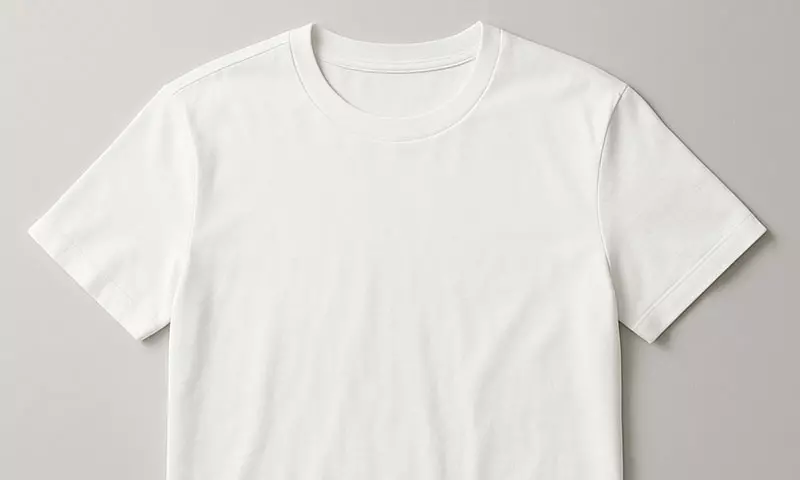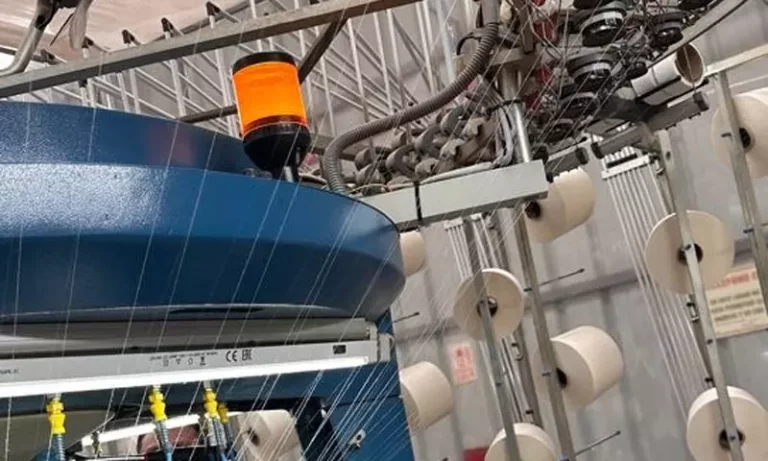It’s hard to imagine a world without T-shirts.
Simple. Effortless. Universal.
From a humble piece of underwear to a timeless expression of identity, the T-shirt has become one of the most democratic garments ever made — worn by sailors, soldiers, artists, rebels and dreamers alike.
But how did this T-shaped piece of cloth conquer the world?
What is a T-Shirt?
- From Cambridge Dictionary:
“a simple piece of clothing, usually with short sleeves and no collar, that covers the top part of the body.”
- Oxford English Dictionary (UK): “A short-sleeved, lightweight, knitted undershirt or outer shirt, having the shape of a capital T when spread out flat.”
- The letter “T” in “T-shirt” comes from the garment’s shape: “When laid flat, the short sleeves and straight body form the shape of the letter ‘T’.”
From Tunics to the “Union Suit”
The story begins more than 2,000 years ago, when men in ancient Rome and Greece wore simple, T-shaped tunics as everyday garments. These early versions weren’t called “T-shirts” yet, but they carried the same idea: light, functional clothing shaped for movement and comfort.
Centuries later, during the 19th century, these forms evolved into the “union suit” — a one-piece undergarment with buttons running down the front. When workers in hot environments began cutting the top half away for comfort, they accidentally created what we now recognize as the modern T-shirt.
The U.S. Navy & the Birth of the Modern Tee
The year was 1913. The U.S. Navy officially introduced the cotton, short-sleeved, crew-neck undershirt as part of its uniform. Light, absorbent and easy to wash, it was perfect for life at sea.
Soon, the T-shirt spread beyond the military. Farmers, miners and mechanics embraced it for its simplicity and practicality. By the 1920s, the word “T-shirt” entered the English dictionary — and a revolution was quietly underway.
The term “T-shirt” entered common usage by the 1920s. For example, the writer F. Scott Fitzgerald used it in his 1920 novel This Side of Paradise.
The Oxford English Dictionary traces an even earlier printed use to 1912 (Daily Princetonian).
From Workwear to Pop Culture Symbol
For decades, the T-shirt remained an undergarment — until Hollywood changed everything. When Marlon Brando appeared in A Streetcar Named Desire (1951), his plain white tee became a symbol of raw masculinity. James Dean followed in Rebel Without a Cause (1955), turning the T-shirt into a statement of youthful rebellion.
Suddenly, the undershirt had stepped into the spotlight. The T-shirt was no longer hidden — it was the outfit.
The Undershirt Revolution: How American Men Turned Practicality into Style
In the early 20th century, American men discovered a new kind of practicality in the T-shirt. Originally worn beneath button-up shirts, it served a simple purpose: to stay fresh without having to launder outer garments daily. Factory workers, sailors and farmers alike began wearing plain white cotton T-shirts under their shirts — changing the undershirt several times a day instead of washing their main workwear.
It was a clever form of economy and hygiene at once: a way to stay cool, reduce laundry costs and look neat despite long hours of labor. This quiet habit, born out of practicality, laid the foundation for what would later become one of the world’s most enduring fashion staples.
The Message on Your Chest
By the 1960s and ’70s, T-shirts became a new form of expression. Screen printing made it possible to display art, slogans and protest messages. From peace signs and band logos to political statements, the T-shirt transformed into a canvas for identity — a wearable voice of the times. In the decades that followed, brands, artists and designers embraced the trend, each adding their own spin. The T-shirt became fashion, activism and art all at once.
For decades, logos were everywhere — splashed across chests like miniature billboards. They told the world what brands we liked, what tribes we belonged to, and sometimes what we could afford. But somewhere along the way, the logo stopped being a sign of style and started feeling like noise.
- Because a Logo Shouldn’t Speak Louder Than You
A T-shirt should express you, not advertise someone else. Big logos distract from the person wearing them — they turn an intimate garment into a moving commercial. True style is quiet confidence, not shouting a brand name across your chest.
- Because Timelessness Is Simplicity
Logos tie clothing to trends — and trends fade. A plain, well-cut, high-quality T-shirt remains relevant year after year. Minimalism never goes out of fashion, because it’s not about the season; it’s about substance.
- Because Real Quality Doesn’t Need a Label
When fabric, craftsmanship and fit are exceptional, you don’t need a logo to prove it. The feel of pure, natural cotton speaks louder than any design. A good T-shirt earns recognition through how it feels, not through what it shows.
- Because Silence Is the New Statement
In a world oversaturated with branding, simplicity has become the most radical aesthetic. Wearing a logo-free T-shirt is a small act of freedom — choosing authenticity over marketing, clarity over clutter. It says: I don’t need to wear someone else’s story to tell my own.
- Because Sustainability Starts with Conscious Choices
Most logo-driven fashion encourages overconsumption — limited drops, new collections, new slogans. Choosing timeless, logo-free basics means consuming less and appreciating more. It’s the difference between fashion (as noise) and clothing (as truth). A logo-free T-shirt invites attention not because it shouts, but because it whispers quality.
It’s a return to what clothing was meant to be: simple, human, honest. True softness — like true style — begins with truth.
The Age of Comfort and Consciousness
Today, the T-shirt is more than just casual wear — it’s a global staple and a reflection of values. Billions are made every year, in every color and cut imaginable. Yet amid this mass production, one truth remains: quality matters. At Pima Prima®, we return to the roots of what made the T-shirt iconic — its purity, simplicity and honesty.
Our garments are made of 100% Peruvian Pima cotton, one of the finest cottons on Earth, celebrated for its extra-long fibers, silky softness and exceptional durability. Every thread tells a story — from the Andean valleys where Pima cotton is grown to the skilled hands that craft each tee. It’s the same timeless silhouette, reimagined with respect for tradition, sustainability and truth.
Because the T-shirt’s journey isn’t over. It’s still evolving — and we believe its future should feel as good as its history looks.
The Age of Comfort, Consciousness & Clarity
Today, the world is rethinking what “fashion” really means. After decades of loud logos and synthetic fabrics, a quiet revolution is happening:
More and more people are choosing T-shirts without labels, without flashy branding — just pure fabric and honest craftsmanship.
They don’t want plastic threads or slogans that fade after one wash. They want what the first T-shirt promised: a natural, soft, durable garment that speaks for itself. This is more than a trend — it’s a return to truth.
True Softness Begins with Truth
From sailors to screen legends, from protest marches to quiet mornings at home — the T-shirt has always been part of our shared story. It began as an underlayer of necessity.
Today, it’s the foundation of modern simplicity. And in a world of noise, the purest statement you can make is wearing something real.
Soft. Honest. Natural.
That’s the future of the T-shirt.That’s Pima Prima®.








